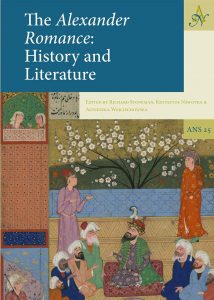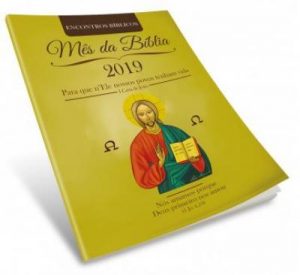O Romance de Alexandre é um relato da vida e das façanhas de Alexandre Magno. Embora construído em torno de um núcleo histórico, o romance é em grande parte obra de ficção. Foi amplamente copiado e traduzido, acumulando lendas e elementos fantásticos em diferentes estágios. A versão original foi composta em grego antes de 338 d.C., quando foi feita uma tradução para o latim. Vários manuscritos tardios atribuem o trabalho ao historiador oficial da expedição de Alexandre, Calístenes, sobrinho de Aristóteles, mas ele morreu antes de Alexandre e não poderia ter escrito um relato completo de sua vida. O autor desconhecido é apelidado de Pseudo-Calístenes.
Entre os séculos IV e XVI, o Romance de Alexandre foi traduzido em copta, guez, grego bizantino, árabe, persa, armênio, siríaco, hebraico e na maioria das línguas europeias. Devido à grande variedade de obras distintas derivadas do romance grego original, o “romance de Alexandre” às vezes é tratado como um gênero literário e não como uma obra única.
O Romance de Alexandre é um texto difícil de definir e avaliar com justiça. Desde seus primeiros dias foi um texto aberto, adaptado em uma variedade de culturas com significados que variam, mas que ainda parecem carregar uma forte corrente de homogeneidade: Alexandre é o herói que não pode se tornar um deus e que carrega consigo os desejos e esforços das culturas hospedeiras.
STONEMAN, R. ; NAWOTKA, K. ; WOJCIECHOWSKA, A. (ed.) The Alexander Romance: History and Literature. Gröningen: Barkhuis & Gröningen University Library, 2018, XV + 322 p. – ISBN 9789492444714
The Alexander Romance is a difficult text to define and to assess justly. From its earliest days it was an open text, which was adapted into a variety of cultures with  meanings that themselves vary, and yet seem to carry a strong undercurrent of homogeneity: Alexander is the hero who cannot become a god, and who encapsulates the desires and strivings of the host cultures.
meanings that themselves vary, and yet seem to carry a strong undercurrent of homogeneity: Alexander is the hero who cannot become a god, and who encapsulates the desires and strivings of the host cultures.
The papers assembled in this volume, which were originally presented at a conference at the University of Wroclaw, Poland, in October 2015, all face the challenge of defining the Alexander Romance. Some focus on quite specific topics while others address more overarching themes. They form a cohesive set of approaches to the delicate positioning of the text between history and literature. From its earliest elements in Hellenistic Egypt, to its latest reworkings in the Byzantine and Islamic Middle East, the Alexander Romance shows itself to be a work that steadily engages with such questions as kingship, the limits of human (and Greek) nature, and the purpose of history. The Romance began as a history, but only by becoming literature could it achieve such a deep penetration of east and west.
Resenha na Bryn Mawr Classical Review em 10.08.2019 por Chiara Di Serio, Università di Roma ‘La Sapienza’
This recent publication, edited by R. Stoneman, K. Nawotka and A. Wojciechowska, contains contributions dealing with several questions connected to a historiographic or literary interpretation of the Alexander Romance .
R. Stoneman’s remarkable competence on the Alexander Romance and the texts connected to it (as evidenced by his high-value monographies and articles), guarantees the quality of the contributions presented here.
Stoneman’s introduction explains very clearly that the problems connected to the use of the Romance as a source arise from its complex relationship to history and to literature. The Alexander Romance is difficult to classify with respect to genre: “it has elements of history, of biography, and of novel” (p. vii). In order to define the AR Stoneman borrows from David Konstan the expression “open text” (1). The AR raises the question whether an open text can be seen as a historical source. Stoneman also addresses the problem of the dating of the text, which according to him belongs to the 3rd century B.C.
The most significant segment in the introduction is devoted to the definition of the AR as “history”. Here Stoneman declares he shares the idea expressed by the philosopher Hayden White: “in creating ourselves, we create our past” (p. viii). Narration is a fundamental category that encompasses all that is written about the past and transforms the present into a completion of the past from which we wish to descend. Narrated history is therefore a mimesis of real history (2). These observations about the narration of historical facts and characters are very interesting because it is not only in the classical world that this type of narration often includes “mythical” elements that distance them from our positivistic and rational idea of history as the description of true events.
Later, Stoneman applies his considerations about the meaning of history to its use in the AR. He reminds that especially Thucydides maintained that events should be reported the way they actually happened. Lucianus also believed that history does not admit lies. In this way, though, history becomes a “transcendental matter”. But few historians followed Thucydides and neither lied nor changed some details, says Stoneman. Therefore, in Stoneman’s perspective, interpretation is inevitable.
He believes history can be conceived in another way, by attributing a “plot” to historiographic narrations. Biographies in particular, he writes, are a way to re-create past experience. Such narrations develop both through space and time and this applies also to the reconstruction of the meaning of Alexander’s career. But such meaning can vary depending on those who read or use Alexander the Great’s stories in different ages and circumstances. The “true” Alexander becomes irrelevant in light of the different meanings that were attributed to him.
An important matter that this volume does not address is that of the many letters (especially those between Alexander and Darius) mentioned in the AR. Stoneman believes that letters are fictional markers in ancient literature. The AR letters help to give the text the impression of truth. But given its heterogeneous style it is not possible to see a pattern in their inclusion in the text. It mould be useful to investigate further the use of such documents in historical narrative.
In conclusion Stoneman states that the AR’s “open text” originates as a historical narration but then acquires a “mythical” configuration as a literary work (p. xii), and as such it had a large influence both in both East and West (p. iv).
Stoneman ends his introduction by summarizing the main ideas contained in the essays that make up the volume. Abstracts of the individual contributions also appear at the end of the work. What follows below is a synthesis of their main points.
The first section is devoted to the definition of the AR as literature. I. Ladynin examines the passages in which Alexander is equated to the Egyptian king Sesonchosis. According to the author, this could be Egyptian propaganda exalting Egypt’s past as world leader. This past was revived with Alexander when he became Egypt’s legitimate sovereign, thanks to his creation of a new world empire. Traces of this fictional propaganda can be found in the texts by Dicaearchus of Messene and Pompeius Trogus.
Y. Trnka-Amrhein considers two texts, The Sesonchosis Novel and The Ninus Novel, as narrations deriving from the AR. She believes they show similar narrative patterns, especially as to their content. They deal with Eastern sovereigns, including Semiramis, whose stories can be compared with that of Alexander.
In his own essay R. Stoneman provides a definition of “wonder” that explains the AR’s position within Greek paradoxography. According to the author, wonders are presented in a natural way and provide the sources for later philosophical narrations. The AR is an “innocent text” that only narrates and does not interpret.
H. Manteghi examines the Life of Apollonius by Philostratus, who imagined his character’s journey as a repetition of Alexander’s itinerary towards the Eastern borders. Her analysis continues with the Persian version of the poem Iskandarnāma by Nizāmi that tells of a journey made by Alexander accompanied by Apollonius himself (Balinās). The author postulates that Nizāmi could have mistaken Alexander pupil of a pupil of Apollonius of Tyana with its more famous namesake. Moreover, Lucian’s dialogue Alexander sive Pseudomantis had probably collected several stories about the magician Apollonius circulating in Syria and in Asia Minor. In addition, Manteghi mention hermetical works as source of Nizāmi’s poem, in which Apollonius is a contemporary of Alexander. Manteghi further speculates about the existence of popular stories on Apollonius’ magical feats, as those mentioned by John Tzetzes, which were applied to Nizāmi’s narrative. Finally, an important role might be attributed to a Zoroastrian tradition on Nizāmi’s tales originating in Azerbaijan, where that culture was spread.
D. Selden’s study sets out from the observation that Indian literature shows only feeble traces of Alexander’s invasion of Punjāb, while classical historians deal extensively with it. These tales build a coherent picture that reveals the features of a “mythologie blanche” (according to an expression used by J. Derrida, see p. 82), where several episodes of a pseudo- philosophical nature are inserted. The Indian narrations of the Sassanide period reveal, if compared with the Greek ones, the point of view from which the classical Greek tradition reports those episodes. Selden then dwells on the description of Poros, provided by Diodorus Siculus, that represents an Indian double of Alexander and evokes a complementary image of the king, placed in a circumscribed world that differs from Greek culture.
The second section of the volume is devoted to the “bad” historical exposition of the AR. G. Oliver tries to analyse the AR from a political and economic point of view. He examines the context of the Liber de Morte that contains a will by Alexander in which he names the Rhodians as his executors. Oliver doubts whether this document dates to the late 4th century.
B. Garstad’s article focuses on what is apparently a gross mistake in the account of Alexander’s march from Italy to Carthage and Egypt in the AR, one that betrays a Roman point of view in its presentation of the relations between Alexander and the Romans. Up to the invasion of Persia from Egypt, Alexander seems concerned to defend his realm and collect his armies. Then he marches on, apparently to support Egypt’s relationship to the Greco-Roman world. The AR creates a sort of association between Greece, Rome and Egypt against their common Eastern enemies.
K. Nawotka believes that the author of the AR considered his work a historical treatise. He analyses the account of the battle of Gaugamela, which contains historical elements, although it is largely fictitious. The material used in the account comes from previous Greek works, but most of all from an Iranian account of the crossing of the river Stranga. The author of the AR uses several traditions, selecting from them in order to create the ideal image of a king. Moreover, he emphasises his erudition and originality compared to his sources.
H. Wulfram’s study focuses on the work of the translator Julius Valerius and the homogeneity of its style. He analyses Alexandria’s foundation pointing out the many thematic parallels with Virgil’s’ work. He believes that there is an “intertextuality of the second degree” in Julius Valerius’ s translation.
H. Baynham deals with the episode of Alexander’s death in the Metz Epitome that tells the story of how he crawls on hands and knees toward the Euphrates with the intention of diving into it and disappearing. She remarks that this peculiar detail is absent from Alexander’s historiography, except for Arrian. She compares other parallel accounts of the apotheosis of historical characters—Heracles, for instance, or Roman emperors. I believe that these last observations are very valuable for the definition of Alexander as a heroic figure, which we need to take into account when we consider the construction of his image from a historical point of view.
The third section of the volume deals with the influence of the AR. C. T. Djurslev’s essay examines the sources that precede the Armenian version of the AR, where the episode of Alexander’s gates against the assault of Gog and Magog can be found. He demonstrates that the apocalyptic significance of this episode was absent from its early versions where such “gates” stood for the borders of safe, known and “civilized” lands. In order to support his idea, the author analyses some passages from De excidio urbis Hierosolymitanae.
A. Klęczar investigates the Jewish texts that present Alexander in relation to wise men. She refers particularly to the treatise of the Tamid with the episodes of the meeting with the elder in Negev, the journey to the land of darkness, Alexander’s meeting with the Amazons and the scene of his arrival at the gates of Paradise. All this supports the image of Alexander as a universal sovereign.
C. Jouanno focuses on the use of the AR by the Byzantine chronicles. She comes to the conclusion that while the influence of the tales of Pseudo-Callisthenes on the chronographic tradition was common in medieval Europe, the opposite trend is quite rare. Her essay ends with a useful appendix containing an analytical table of the borrowings from Pseudo- Callisthenes in Byzantine chronographies.
The volume ends with E. Cottrell’s article on the circulation of the AR in medieval Islam and its reception in the Persian language. The intellectual activity of the Buyids shows the influence of this tale and of the Pseudo-Aristotelian Epistolary Novel. She examines in particular the Florilegium (Ṣiwān al-ḥikima) remarking its characterization of Alexander as pious sovereign. The author concludes that the Arab Alexander is even more monotheistic than in the Syrian versions, but that also the γ version of the Pseudo-Callisthenes presents Alexander as such. Finally, she observes that the role of the Buyid court in the transmission Greek philosophy and literature was important, and favoured the renaissance of Alexander’s figure.
One of the merits of this volume is the variety of the contributions showing how the “narrative discourses” of the AR – to use an expression of H. White – create the image of the past, or rather “found” what we like to call history.
Authors and titles
Richard Stoneman, Introduction: on using literature for history
I Defining the Alexander Romance as literature
Ivan Ladynin, Alexander – ‘the new Sesonchosis’: an early Hellenistic propagandist fiction and its possible background
Yvona Trnka-Amrhein, The fantastic four: Alexander, Sesonchosis, Ninus and Semiramis
Richard Stoneman, The Alexander Romance and the rise of paradoxography
Haila Manteghi, The king and the wizard: Apollonius of Tyana in the Iskandarnāma of Nizāmi Ganjavi (1141–1209)
Daniel Selden, Alexander in the Indies
II How to read ‘bad’ history
Graham Oliver, The Alexander Romance and the Hellenistic political economy
Benjamin Garstad, Alexander’s circuit of the Mediterranean in the Alexander Romance
Krzysztof Nawotka, History into literature in the account of the Campaign of Gaugamela in the Alexander Romance
Hartmut Wulfram, Intertextuality through translation: the foundation of Alexandria and Virgil in Julius Valerius’ Alexander Romance
Elizabeth Baynham, “Joining the gods”: Alexander at the Euphrates; Arrian 7.27.3, Metz Epitome 101-102 and the Alexander Romance
III Related texts: the impact of the Alexander Romance
Christian Thrue Djurslev, Revisiting Alexander’s gates against ‘Gog and Magog’: observations on the testimonies before the Alexander Romance tradition
Aleksandra Klęczar, The universal rule of Alexander in Tamid 32: an overview
Corinne Jouanno, Alexander Romance and Byzantine world chronicles: history cross-fertilized by fiction and the reverse
Emily Cottrell, Alexander at the Buyid Court
Notes:
1. D. Konstan, The Alexander Romance: the Cunning of the Open Text, in «Lexis» 16 (1998), pp. 123-138.
2. H. White, The Content of the Form. Narrative Discourse and Historical Representation, Baltimore 1987, e. g. 27, 29.
Leia Mais:
Text and English translation of the Greek Alexander Romance





